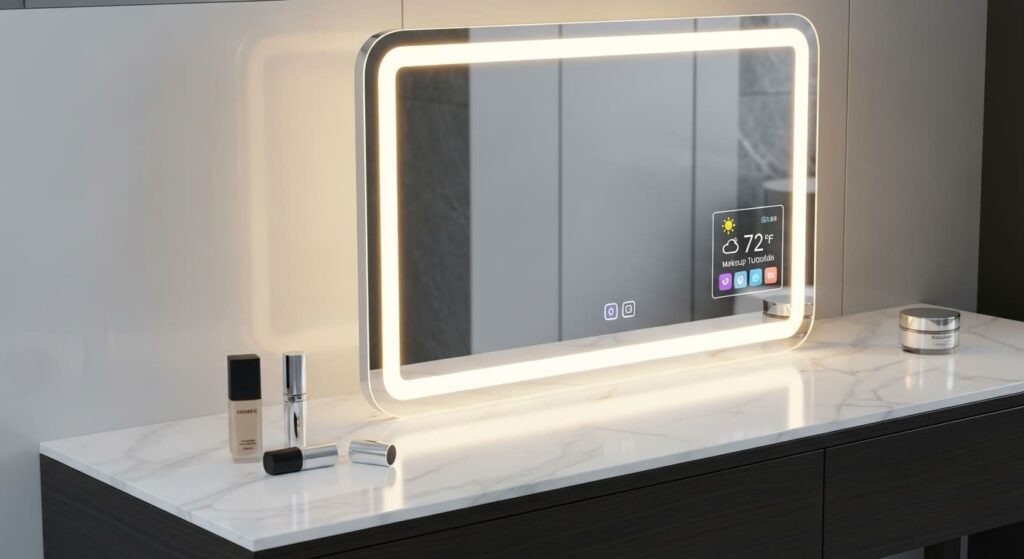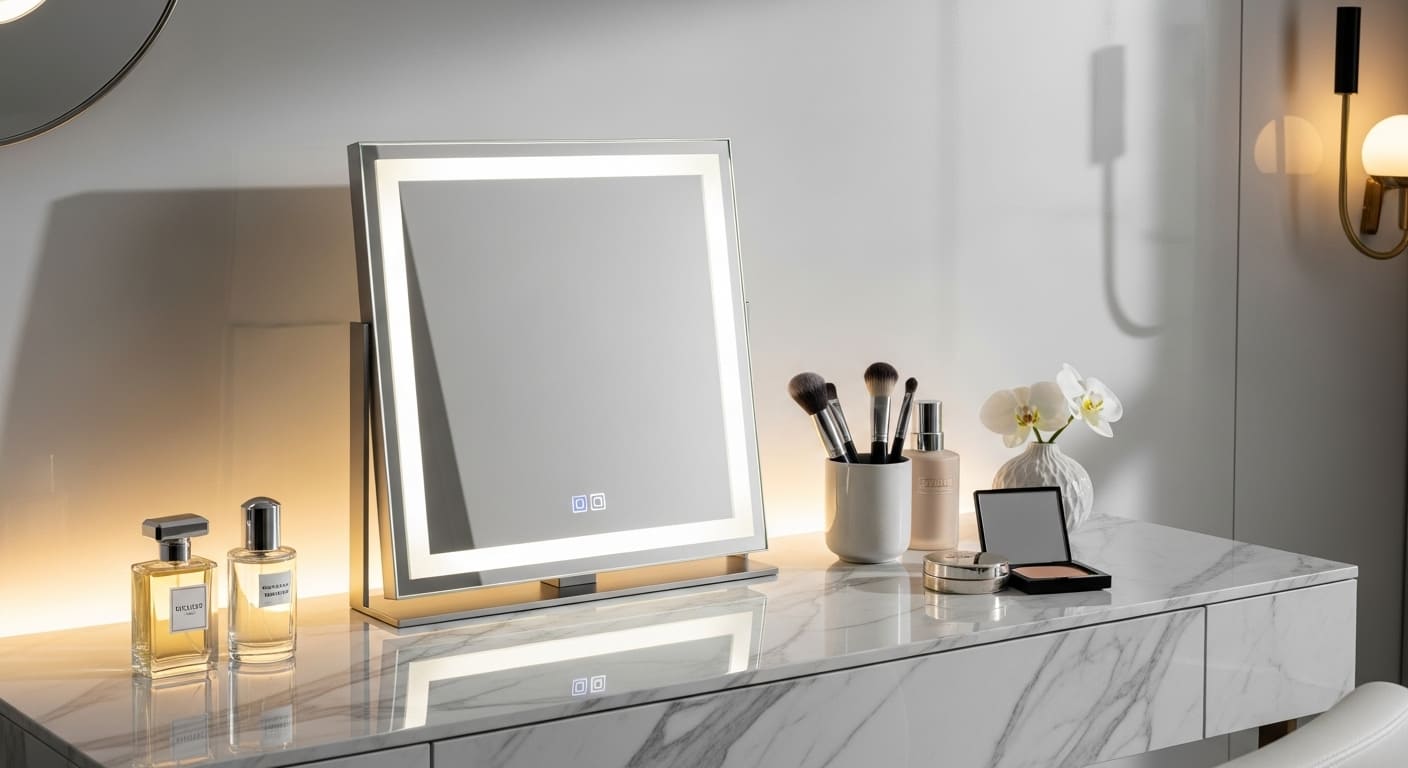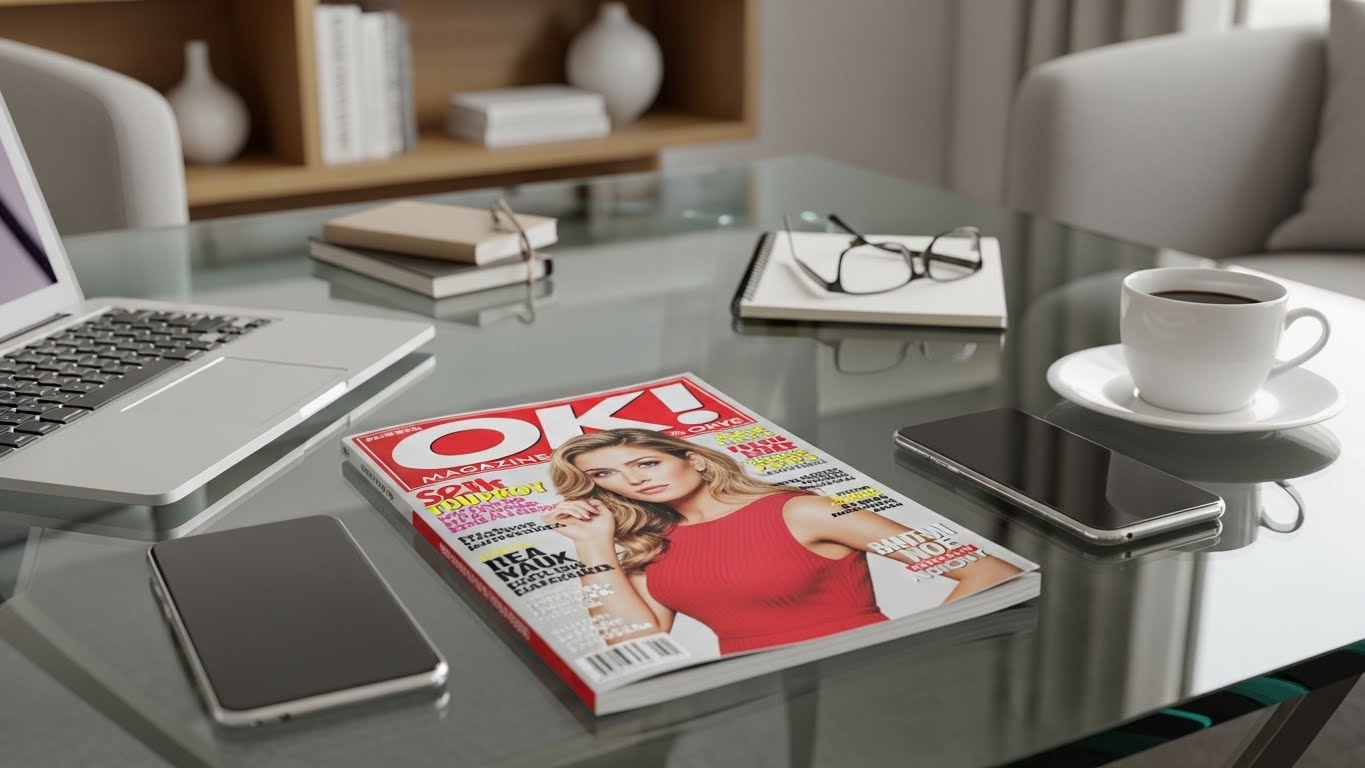Introduction:
For centuries, the vanity mirror has been more than just a household item – it has been a symbol of beauty, luxury and self-expression. From the ornate gold frames of royal dressing tables to today’s sleek, smart mirrors with LED lighting and touch controls, these simple accessories have evolved along with human culture and technology. The journey to the make-up mirror reflects not only our fascination with appearance, but also our changing sense of design, innovation and comfort.
The Origin of the Vanity Mirror: Beauty in the Age of Reflection
The history of the makeup mirror begins thousands of years ago. Early mirrors were not made of glass, but of polished bronze, copper or obsidian. The ancient Egyptians, Romans and Chinese elites used them as personal beauty tools and status symbols. These primitive reflective surfaces required constant polishing and care, but they served an important ritual purpose.
In the 14th and 15th centuries, advances in glass production led to the creation of more sophisticated mirrors. Venetian artisans on the island of Murano became world famous for their craftsmanship, creating mirrors that were not only functional but also decorative works of art. These mirrors were luxury items, often decorated with intricate gold leaf designs, found only in the homes of the elite. The vanity mirror on this level symbolizes wealth, power and self-awareness.
18th and 19th centuries: elegant meets function
When Europe entered the Age of Enlightenment, a culture of vanity developed. People began to see personal grooming as a daily ritual, and mirrors became important fixtures in bedrooms and boudoirs. Vanity mirrors as we know them today – attached to dressing tables – began to appear in France and England during this period.
Woodworkers and craftsmen created exquisite mirrored furniture that complemented the beautiful aesthetics of Rococo and Victorian interiors. Curved frames, hand-painted details and floral motifs dominated the style. The mirror was no longer just a luxury – it was a centerpiece of beauty, reflecting both one’s physical beauty and social sophistication.
In the late 19th century, with the Industrial Revolution in full swing, mass production made mirrors more affordable. Mirrored vanities became popular among the middle class, symbolizing the democratization of luxury. For the first time, people from all walks of life can own a personal make-up mirror and experience the same self-care rituals that were once reserved for the elite.
The 20th Century: The rise of Modern Vanity Design
The 20th century brought dramatic changes in aesthetics due to innovation, cinema and changing lifestyles. Hollywood’s golden age made the makeup mirror a symbol of glamour. Movie stars were often photographed sitting by illuminated mirrors surrounded by soft light – leading to the now iconic Hollywood-style mirror still preferred today.
By mid-century, minimalist and geometric shapes began to influence furniture design. Modern vanity designs emerged with clean lines, mirrored surfaces and materials such as chrome and glass. In the 1950s and 60s, women adopted the dressing table as a private relaxation space – a place to seek, use make-up, reflect and express personality.
As electric lighting advanced, so did vanity technology. Built-in bulbs and adjustable lighting allowed users to simulate daylight or evening tones, bringing personal aesthetics to a new level of functionality. In the 1980s, the make-up mirror was no longer just an accessory – it was part of a lifestyle.
The Digital Age: Smart Mirrors and the Future of Vanities

In the 21st century, design and technology have revolutionized the vanity experience. Modern vanity designs now include LED lighting, Bluetooth connectivity, touchscreen controls and even voice activation. Smart make-up mirrors can adjust brightness, display weather updates, play music or guide you through make-up tutorials.
Luxury brands have introduced mirrors that analyze skin health using AI, and offer recommendations for skincare routines. Meanwhile, minimalist design trends have given rise to mirrors that blend seamlessly with modern interiors – frameless, backlit and utterly elegant.
These mirrors not only enhance beauty routines, but also reflect our desire for efficiency and aesthetic harmony. Makeup mirrors have developed as a mixture of art and technology, which fits perfectly with today’s hectic lifestyle.
Cultural Symbolism: Beyond reflection
Throughout history, vanity mirrors have been associated with human identity and culture. In art and literature, mirrors symbolize introspection, truth and self-awareness. They have been used to depict both vanity and wisdom – a dual nature that continues to fascinate designers and thinkers alike.
In modern culture, mirrors are no longer seen as a means of narcissism, but as tools of confidence. They allow people to take some time to explore their personal style, prepare for the day or just connect with themselves. This emotional connection between a person and their reflection has kept the vanity mirror relevant regardless of era or trend.
Design evolution: from ornate to minimalist
An important aspect of the transformation of vanity mirrors is how design philosophies have changed over time. Earlier styles favored ornamentation – floral carvings, gold leaf frames and elaborate craftsmanship. However, today’s modern vanity designs embrace simplicity, clean geometry and neutral tones.
This design development reflects wider social trends. In the past, mirrors demonstrated wealth; Today, they reflect taste and functionality. Modern mirrors often have adjustable lighting for make-up precision, hidden storage for cosmetics and elegant designs to match minimalist interiors. The concept of “less is more” has redefined luxury.
The role of lighting: Perfecting the reflection

Light has always been the secret ingredient behind every beautiful reflection. Early vanity setups relied on candlelight or daylight, which often cast uneven shadows. Modern technology solved that problem with integrated LED lighting, which mimics natural light and increases the precision of makeup application.
Hollywood-style mirrors, with a ring of bulbs around the frame, remain a perennial favorite for their flattering shine. Modern design takes this a step further with customizable light temperatures – warm, cool or natural white – giving users full control over their surroundings.
The integration of smart sensors means that the make-up mirror automatically adjusts the brightness, creating the perfect mood at any time of the day.
Vanity Mirror in interior design: blending function and art
Today, interior designers consider the vanity mirror both a functional object and an artistic detail. Whether wall-mounted, tabletops or freestanding, mirrors have become focal points in bedrooms, bathrooms and dressing rooms.
For luxurious interiors, large round mirrors with halo lighting create a sense of sophistication. In minimalist homes, frameless rectangular mirrors complement modern decor. In a classic setting, vintage-inspired mirrors with ornate frames create nostalgia and charm.
Modern vanity design also emphasizes sustainability with eco-friendly materials, energy-efficient lighting, and durable construction. It’s not just about beauty – it’s about living a conscious life.
The Psychology of Vanity Mirror
Beyond design and technology, the make-up mirror plays a psychological role. Looking in the mirror is an intimate act – it shapes how we see ourselves and how we present that image to the world. For many people, the mirror represents self-confidence and rituals.
In an age where social media emphasizes visual identity, mirrors have become central to daily life. They help us prepare, perform and show confidence. Therefore, vanity is not just a piece of furniture – it is a personal platform where people prepare to face the world.
The Global influence of Vanity Mirror Trends
Around the world, vanity trends vary by culture, but share a similar appreciation for reflection and beauty. In Japan, minimalist make-up mirrors are on par with Zen-inspired interiors. In Europe, luxury brands continue to produce handmade mirrors rooted in tradition. In North America, the focus is on smart, practical and stylish layouts that suit modern lifestyles.
Global manufacturers are now blending these influences to create universally appealing designs. outcome? A make-up mirror that transcends boundaries – providing both beauty and efficiency, wherever it is used.
Conclusion:
From the bronze mirrors of ancient civilizations to the illuminated smart mirrors of today, the evolution of the make-up mirror tells the story of innovation, beauty and the human desire for self-expression.
What started as a symbol of wealth has turned into a universal object of empowerment. The modern make-up mirror is not just about appearance – it’s about self-confidence, creativity and reflection in every sense of the word.
As design and technology continue to evolve, one thing is certain: Beauty mirrors will always have their place in our lives – where beauty meets purpose, and where every reflection tells a story.












